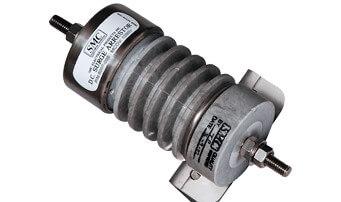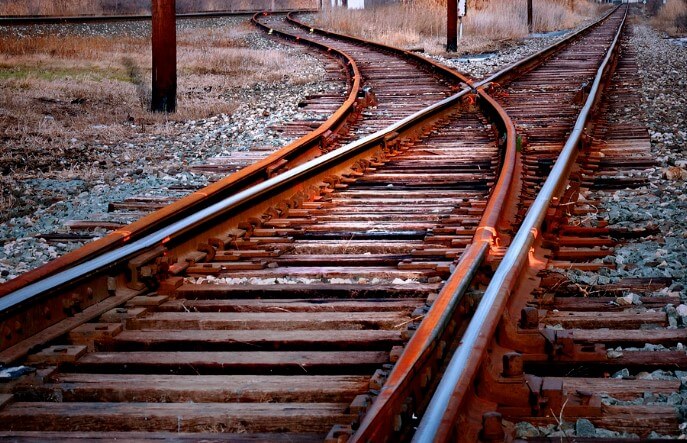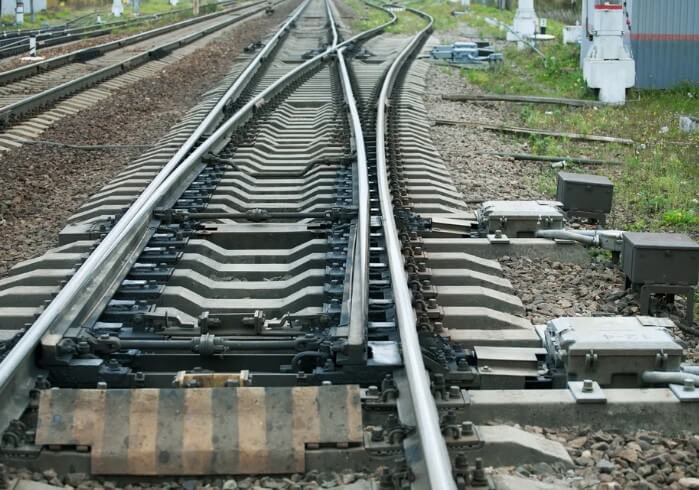
In today’s modern rail networks, trains are more advanced and electrified than ever. With progress comes the demand for greater safety, efficiency, and reliability—especially when dealing with unpredictable electrical environments. One component quietly working behind the scenes to ensure uninterrupted rail operations is the surge arrestor. While often overlooked, Surge Arrestors in Trains play a critical role in protecting valuable equipment and ensuring the safety of both passengers and crew.
For engineers, especially those working in railway systems or transportation infrastructure, understanding surge arrestors isn’t just optional—it’s essential. At Swartz Engineering, we believe that mastering the fundamentals and functions of surge arrestors is key to designing and maintaining resilient railway systems. This blog will explore what surge arrestors do, why they matter in train systems, and what every engineer must know about selecting and maintaining them.
What is a Surge Arrestor?
Let’s start with the basics. A surge arrestor is a device that protects electrical equipment from overvoltage transients, commonly known as power surges. These surges can originate from lightning strikes, switching operations, or faults within the power system. The role of the surge arrestor is to divert excess voltage away from sensitive components and safely channel it to the ground.
Think of it like a pressure relief valve for your train’s electrical system. Without it, a sudden surge could fry control systems, damage communications infrastructure, or even result in train downtime—all of which are costly and potentially dangerous.

GET IN TOUCH
In a hurry? Call us at 276-285-3841
Why Surge Arrestors in Trains Matter
Rail systems are especially vulnerable to electrical surges due to their extensive overhead catenary systems, grounding variability, and exposure to environmental extremes. These systems are vast networks of interconnected components that can amplify the effects of electrical disturbances.
Here’s where Surge Arrestors in Trains become critical:
- Passenger Safety: Electrical surges can cause fires, shock hazards, or equipment malfunctions. Surge arrestors reduce these risks by neutralizing surges before they reach critical components.
- System Reliability: Downtime in a railway network due to electrical failures can lead to service disruptions, affecting thousands of commuters. Surge arrestors help maintain uninterrupted service.
- Cost-Efficiency: Replacing train control systems or power modules is expensive. Surge arrestors extend the life of these components and reduce maintenance costs.
- Compliance and Standards: Regulatory agencies require surge protection in electrified train systems to meet safety codes and standards. Engineers must ensure designs are compliant.
Key Applications in Train Systems
Surge Arrestors in Trains are strategically installed throughout rail networks. They are typically found in:
- Pantographs and Overhead Line Interfaces: These are high-risk areas for lightning strikes and voltage fluctuations. Surge arrestors protect onboard systems from damage when a surge travels down from overhead lines.
- Onboard Electrical Systems: Trains today are filled with sensitive electronics—train control and monitoring systems (TCMS), HVAC units, and passenger information systems. Onboard surge arrestors defend against internal and external electrical threats.
- Traction Power Supply Systems: Traction systems, especially in DC railways, are vulnerable to switching surges. Arrestors here help maintain voltage stability across the traction circuit.
- Signal and Communication Systems: Reliable communication is essential for train safety. Surge arrestors prevent disruptions to signaling and data transmission caused by voltage spikes.
What Engineers Must Know When Designing with Surge Arrestors
At Swartz Engineering, we’ve worked with countless engineers across transportation sectors. Here are the most important considerations every rail engineer should keep in mind:
1. Understand the Source of Surges
It’s not enough to just install a surge arrestor. Engineers must assess the likely sources of surges within their system. Is the track section near high lightning zones? Are frequent switchgear operations creating transients? Knowing the threat determines the solution.
2. Select the Right Type of Surge Arrestor
There are various surge arrestor technologies, including:
- Metal Oxide Varistor (MOV): Commonly used due to its high energy absorption and quick response.
- Silicon Avalanche Diodes (SAD): Precise clamping voltage but lower energy handling.
- Gas Discharge Tubes (GDT): High surge current capacity but slower response.
Each type serves a purpose. For instance, MOVs are ideal for overhead line protection, while SADs work well in protecting sensitive onboard electronics.
3. Proper Installation and Grounding
Improper installation of surge arrestors can render them ineffective. Engineers must ensure proper grounding systems are in place and that arrestors are mounted according to manufacturer guidelines. The shorter the path to the ground, the better.
4. Maintenance and Lifecycle Considerations
Surge arrestors degrade over time due to repeated exposure to over voltages. Engineers must incorporate maintenance schedules to inspect, test, and replace arrestors as needed. Some modern surge arrestors come with monitoring systems that indicate their health status.
5. Coordination with Other Protection Devices
Surge arrestors must be coordinated with other protection devices like circuit breakers, fuses, and relays. This ensures that when a surge occurs, the entire system responds appropriately without creating false trips or additional hazards.

GET IN TOUCH
In a hurry? Call us at 276-285-3841
Real-World Example: Swartz Engineering's Commitment to Rail Safety
At Swartz Engineering, we’ve seen firsthand the difference proper surge protection makes. In one recent project, we worked with a regional rail operator whose fleet was suffering repeated traction system failures. After a detailed electrical audit, we discovered that surge arrestors were either improperly rated or missing entirely in critical areas.
By retrofitting high-performance surge arrestors and optimizing grounding systems, the operator reported a 65% drop in electrical faults within six months. Passenger delays were minimized, and the maintenance team could shift from emergency repairs to proactive system health checks.
Future Trends in Surge Protection for Railways
Railways are evolving with smart systems, real-time analytics, and increased electrification. Surge protection must evolve too. Here are some emerging trends:
- IoT-Enabled Surge Arrestors: These devices come equipped with sensors that monitor temperature, surge count, and health status, allowing predictive maintenance.
- Integration with Smart Grid Systems: As trains become part of broader smart energy networks, surge arrestors will need to communicate and coordinate with external grid protection.
- Customized Modular Arrestors: Engineers are designing systems with modular arrestor units tailored to specific train functions and regions, allowing easier upgrades and replacements.
Conclusion
Surge Arrestors in Trains are far more than optional extras—they are vital guardians of safety, performance, and cost-efficiency. As rail systems become more complex and exposed to higher electrical risks, engineers must deepen their understanding of surge arrestors and make informed choices about their design and deployment.
At Swartz Engineering, we are dedicated to empowering engineers with the tools, insights, and technologies they need to build safer, smarter, and more reliable railway systems. Whether you’re designing a new rail line, upgrading existing infrastructure, or troubleshooting electrical issues, remember: the right surge arrestor can make all the difference.
Need help selecting or implementing the right surge arrestor solution for your rail system? Contact Swartz Engineering today—we’re here to keep your trains on track and protected.
Products We Offer
Swartz Engineering strives to provide top-quality products to achieve our customer's needs. Our products include:
- Type 76 DC Relay
- Type 82 DC Relay
- Swartz Engineering’s Type 64 Ground Relay
- Type 32 Reverse Current Relay
- Type 150 DC
- CSM Shield Monitor
- Metal Oxide Surge Arrestors
- Transducers
- MVIS SL Slim-line Contactor
- Fully-tested Power Control Rooms
- Swartz Engineering’s Portable Substations
For nearly half a century, we have proudly led the industry in ensuring safety and efficiency. Swartz Engineering is a trusted family-owned company dedicated to providing top-notch power distribution solutions for the electrical industry. Contact us today!
